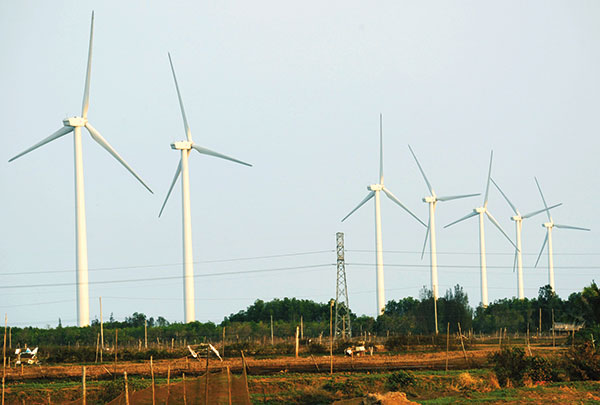Direct PPAs spark renewable energy
 |
| To attract investment to renewable energy, MoIT will pilot a direct PPA programme Photo: Le Toan |
The mechanism will enable businesses in Vietnam to enter into contracts directly with renewable energy generators. Speaking at the annual Vietnam Business Forum (VBF) last week, Deputy Minister of Industry and Trade Do Thang Hai said that the pilot will be implemented in the fourth quarter of 2018 at the latest.
The Ministry of Industry and Trade (MoIT) had previously confirmed that it was prioritising the study of direct power purchase agreements (DPPAs), and that the Electricity Regulatory Authority (ERA) has been assigned to work with the United States Agency for International Development (USAID) to implement a technical assistance programme on DPPAs.
The MoIT asked the consultants to define clear milestones and provide a detailed schedule of DPPA implementation for the review and approval of the ministry and government.
“In terms of capacity, it has been agreed that the pilot should be 300 megawatts (MW),” Hai said.
The MoIT is currently working with General Electric (GE) on a 1,000MW wind project and has a power purchase agreement (PPA) in place with GE for a 200MW wind power project.
As the lead agency (in co-ordination with the USAID) on the DPPA technical assistance programme, ERA has met with AmCham and EuroCham to discuss the implementation of DPPAs.
The technical programme will focus on three main outcomes: reviewing all legislation and regulations relevant to DPPAs in order to propose adjustments and procedures for amendment, reviewing all current international case studies with a view to proposing a relevant model for Vietnam, and developing a plan for both the pilot programme and the official implementation of the agreed DPPA mechanism.
John Rockhold, head of VBF’s Power and Energy Sub-Working Group, stated in a report that VBF will submit a proposal to the MoIT on how to reach the 300MW threshold with five or six pilot projects. VBF will also recommend several potential private sector developers and buyers. VBF can itself undertake a 30MW project which will be affordable for Vietnamese investors and developers.
The MoIT is also concentrating on feed-in tariffs (FiT) for wind power. The ministry’s Renewable Energy Department director general Pham Trong Thuc, said that the ministry submitted the latest proposal on FiT for wind power in August 2017 for the government’s review and approval. The drafted tariffs are higher than those previously mentioned in the prime minister’s Decision No.37/2011/QD-TTG.
The draft suggests that the proposed tariffs will be valid until December 31, 2020, after which new tariffs will be imposed or bidding will be conducted.
“Vietnam has just implemented a wind power project with operational capacity of 160MW, and aims to add 70 more megawatts. The new increased tariff is expected to attract more foreign investment in wind power plants in Vietnam,” said Thuc.
However, VBF reported that it made a lengthy submission to the ministry on the draft grid-connected solar PPA that would have improved the terms of the solar grid and provided adequate and reasonable protection to investors and banks financing such projects. But the main recommendations of the Power and Energy Sub-Working Group were not reflected in the final PPA document that was recently published.
According to VBF, this omission will hamper the development of low-cost finance for solar energy plants in Vietnam.
What the stars mean:
★ Poor ★ ★ Promising ★★★ Good ★★★★ Very good ★★★★★ Exceptional
Latest News
More News
- Global partnerships key to Vietnam’s IFC development (December 26, 2025 | 16:18)
- Vingroup pulls out of bid to invest in North-South high-speed railway (December 26, 2025 | 11:42)
- Strengthening supply chains through trade promotions and customs reform (December 24, 2025 | 14:00)
- PM orders investment model for North–South high-speed rail (December 22, 2025 | 17:43)
- LS Eco Energy to invest in Vietnam rare earth sector (December 22, 2025 | 17:31)
- Government moves to establish International Financial Centre (December 21, 2025 | 21:00)
- Vietnam's IFC to target global investment flows (December 21, 2025 | 18:00)
- Two national hospitals expand capacity with new facilities (December 20, 2025 | 09:00)
- Ha Tinh breaks ground on major Vingroup industrial and energy projects (December 19, 2025 | 18:24)
- EVN launches major power infrastructure projects nationwide (December 19, 2025 | 18:17)

















 Mobile Version
Mobile Version